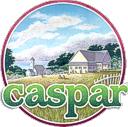
home
 home |
Home Planning Maps FAQ Library Gallery Press Rentals Calendar Donate |
Caspar is a State of Mind |
Caspar News and Press ReleasesCaspar is a State of Mindby Michael Potts Preposterous: Planning for the next hundred years! Yet that is precisely what the people of Caspar are doing. The present folly started in 1995, when a few Casparados realized that someday we might urgently need community... so we better start building some. 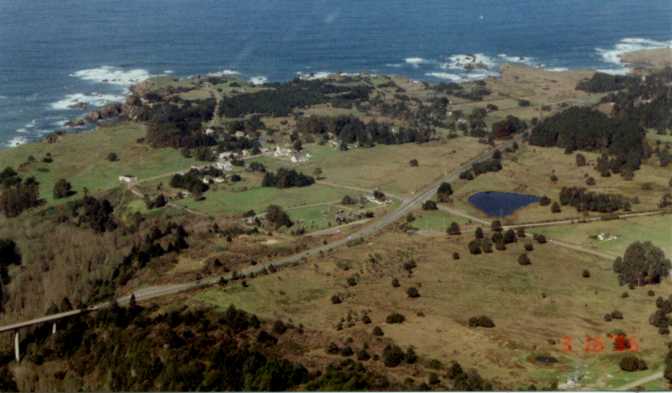 Perched on a headland between two pristine beaches, enfolded by forest, luckily missed by Highway One, the village of Caspar has been on the cutting edge of change for 150 years. In 1898, Caspar's inventive millwrights introduced the latest technological breakthroughs: steam-powered double-biting bandsaws, gangsaws, and other innovations which revolutionized the timber industry and are still in use around the world today. Old timers say it was the biggest town ever on this stretch of coast, but there is no doubt that Caspar's ability to extract redwood from the forest was prodigious, 70,000 board feet in every twelve hour shift. Caspar was also the agricultural heart of the Mendocino Coast, providing most of its vegetables, beef, and dairy products. In 1906, a very good year for the mill, potatoes exceeded timber, pound for pound, in Caspar's domestic product. Milling began in 1861 and ended in 1955. The mill's legacy can still be seen in a few gem-like houses – the Supervisor's house, and the modest home at 15000 Caspar Road are the best examples of "Caspar style". Even modest buildings were built of straight and tight-grained old-growth redwood and fir, often odd-dimensioned, likely mis-sawn, scavenged, and lovingly incorporated by Caspar's self-taught homebuilders. 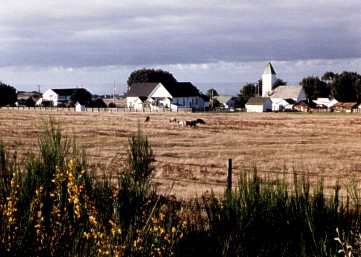 For nearly a half century, rumors periodically galvanized Caspar's dwindling population into short bursts of shared concern. Would we be home to Disneyland north? No: not enough water. A Ramada? A golf course? A terminal for off-shore oil? Meanwhile, Harry Wakerley, the Caspar Lumber Company's resident manager, curmudgeon, and proud Caspar chronicler, tried futilely to keep income ahead of taxes by renting shacks and pasture. Many houses built in Caspar during this period relied on recycled lumber salvaged in wood mining operations on the mill's derelict buildings. During the early 1980s, the Coastal Act, Proposition 20, decreed that local coastal plans be drawn up, and Caspar residents met diligently and argumentatively at the old Caspar Schoolhouse to develop a plan. The resulting plan was outdated before it was finished, but it did represent a first attempt at planning. 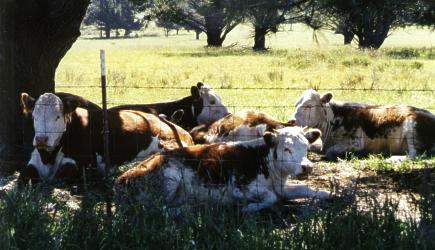 The Lumber Company sold its last holdings to the Caspar Cattle Company in 1990, and rumors redoubled. In 1997, news reached Caspar that the Company's 300 acres were for sale, and that buyers from afar were flying in to speculate on one of the decade's hottest coastal developments. Community organization spontaneously escalated as residents came to understand that current zoning and the obsolete coastal plan would allow as many as 100 new houses. The impact of such a development would be devastating to the values we love. Starting in August, 1997, in meeting after meeting residents and friends of Caspar were surprised to find themselves in agreement on many issues: the headlands, pond, beach, and Caspar Creek's riparian bottom should be preserved, and any new development should not violate Caspar's scale and serenity. Fortunately, the Company's owners were forbearing, and Caspar residents prepared themselves for the tedious, demanding process of planning their future. 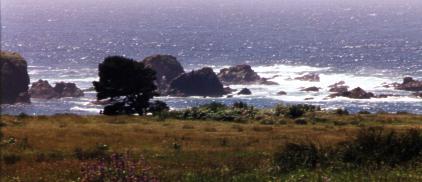 Community-building may be the highest-tech of the late 1990s. In places like Davis, California, the benefits of planning beyond the cookie-cutter parcel and ticky-tacky subdivision can be clearly seen: families are closer, neighbors interact, there is less crime, children settle, energy and materials are well-used. The pattern of automotive blight which has cursed development, especially in California, gives way to pedestrian pockets, neighborhoods, and villages which harken back to more gracious times before the infernal combustion engine rent the fabric of American life. If the 20th Century was the era of heedless greedy extraction, the 21st Century promises to be a time of stewardship and restoration of a more sensible relationship between humans and nature. On the Mendocino coast, the North Cliff motel stands as a monument to the bad old ways, and the un-built Mendocino Post Office gives a hint of things to come. Once again, Caspar is on the leading edge of innovation as it seeks to turn a potential threat into a triumph. In February, 1998, anonymous benefactors retained Randy Hester, a world-class landscape planner and professor at the University of California at Berkeley, to conduct preliminary studies of what Caspar wanted to be. Basing their work on land-based and community-centered principles, Professor Hester and his team of advanced graduate students prepared eight plans for Caspar's future, ranging from everyone's sentimental favorite, absolutely no development at all, to a maximal-sprawl nightmare. Casparados who followed the planning from the beginning could see merit in every plan and perfection in none. Of course we are attracted to "no growth" – especially if it comes with a guarantee that we ourselves won't grow any older! And Caspar residents are quick to agree that some amenities, like a small store, a post office, a bakery, and a community center, may not be feasible in our thinly-settled community. Our children have nothing to stay for after graduating from high school; we need affordable housing, jobs, and diversions to bring them home from college. In May, a well-attended community meeting took several important decisions: to be as inclusive as possible, to carry the planning process at least one step further, and to meet every month – Caspar Community meetings are at 3 pm every second Sunday at the Caspar Shul. A steering committee was formed and charged with the task of determining our next steps. In June, the committee returned with an ambitious plan to raise and spend $100,000 in the next year on planning and community organization. The response was enthusiastic: $13,000 was raised in less than a month. Professor Hester and his students were retained for a second round of planning, and the search for a Caspar Coordinator began. In late August, a letter-writing campaign organized by the steering committee helped secure a $1.8-million grant from the State of California to fund Coastal Conservancy purchase of the southern hundred acres of Company land including the beach and part of the riparian zone; without these letters, the patient perseverance of the Conservancy's Julia McIver, and the eleventh-hour action of the Mendocino Land Trust, this stroke of good fortune would have evaded us. Planning inquiries continued through the summer, and on the second Sunday in September three plans were presented at a standing-room-only Community meeting. Residents and out-of-towners alike remarked that seldom had they attended such a friendly, open, and productive meeting. In four neighborhood gatherings during September, most of the community examined and responded to the plans.  In Caspar during the second weekend in October, the weather was perfect – real estate weather, someone said. Caspar hosted the First Annual Gorse Festival in celebration of our swift and neighborly progress, and recognition of the persistent forces which motivate our work. While launching her new CD, "In the Heart of This Town", Caspar folk-singer Meridian Green dedicated her performance to "the Centennial Gorse Festival". Community spokesperson Vince Taylor acknowledged Meridian's vision: "it takes poets to look so far ahead, and show us the way." As these words are written, the Caspar Community Fund's efforts continue on track. $35,000 has been raised, and a Community Coordinator has been hired: Pat Ackley, fresh from successes in Kansas and Iowa, gets to live her dream of moving to the coast and working toward preserving its special qualities. She and Caspar face great challenges. The owners of the Cattle Company cannot wait forever. The Caspar Community Fund, presently enjoying non-profit 501(c)(3) status as a project of the Dharma Cloud Foundation, is seeking to incorporate as a public benefit non-profit corporation. The steering committee is exploring means of acquiring control of the remaining 200 acres of Company lands, including several possible investment strategies. Although no final plan can be prepared without the help and approval of County officials, surrounding land-holders, and the community, a vision for Caspar's next hundred years is emerging: public access to the headlands with protection for the delicate plant- and animal life; a trail connecting Russian Gulch, Point Cabrillo Preserve, and Jughandle Reserve; as little development as possible, perhaps as few as thirty new sites for single-family dwellings, clustered homes, light and cottage industry, and community-supported agriculture. We envision a village for those who live on the coast more than for visitors, but as Pat Ackley points out, "From Iowa, it's my coast, too." As we build community, the internet has been our principle medium and archivist, and more of our history and plans can be found at our website, CasparCommons.org . We need the support of everyone along the Mendocino Coast as we advance our experiment in preserving rural village life for the next century, and so we welcome donations to the Caspar Community Fund, box 84, Caspar, California 95420. As our plans and our vision of the future becomes clearer, we see that the obstacles we face and the issues we are working to resolve are common to everyone who lives along the coast. We are all Casparados. Caspar is a State of Mind. high-resolution versions of these and other images on the website are available for publication. Email the Caspar Village webster,
mpotts@mcn.org with your precise requirements.
|
| more: Caspar News and Press Releases |
|
Home Planning Maps FAQ Library Gallery Press Rentals Calendar Donate |
|
Caspar Community Center 15051 Caspar Road Caspar, California 95420 - box 84 707-964-4997 | |
|
If you would like to receive email about hometown Caspar events, email your request to lists@casparcommons.org. | |
|
find Caspar Community Center on: |
|
| Community web hosting donated by Mendocino Community Network Thank you, MCN! for more information, email the Caspar Community Coordinator, caspar@mcn.org |
| copyright © 2024 Caspar Community permission to reprint is hereby granted and EARNESTLY desired |
|
: : last updated 29 April 2019 : 12 pm (s) : : printed with 100% recycled electrons! for website feedback, email the Caspar Village webster |